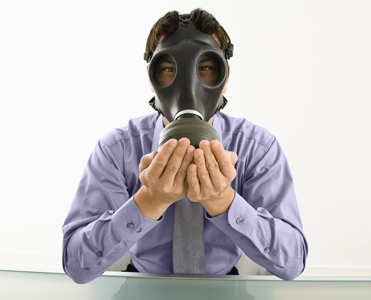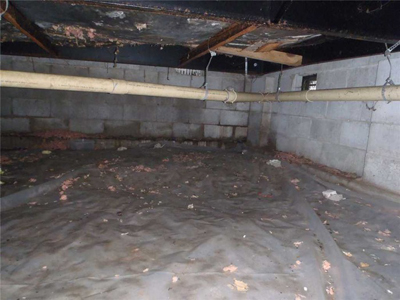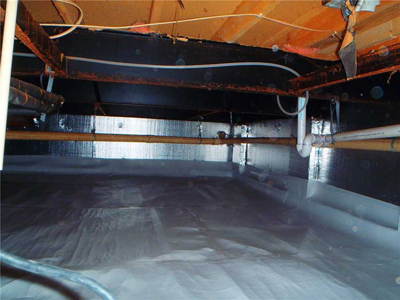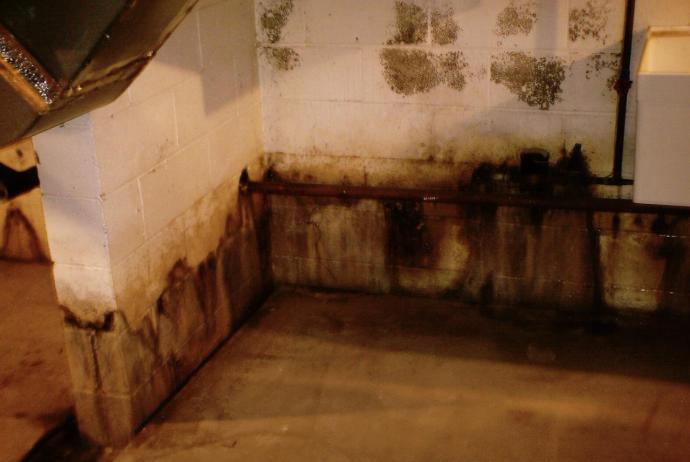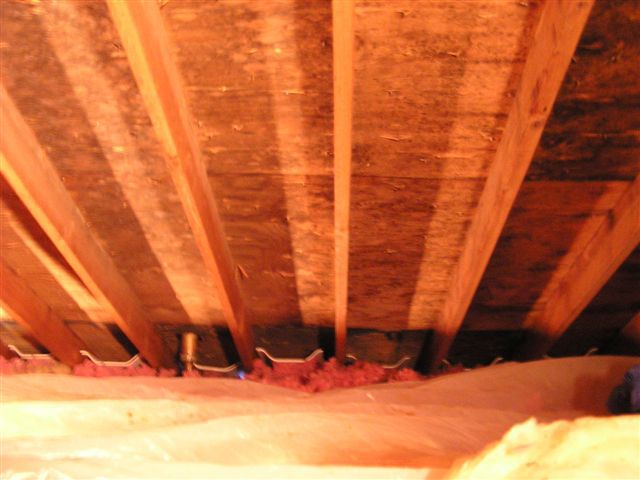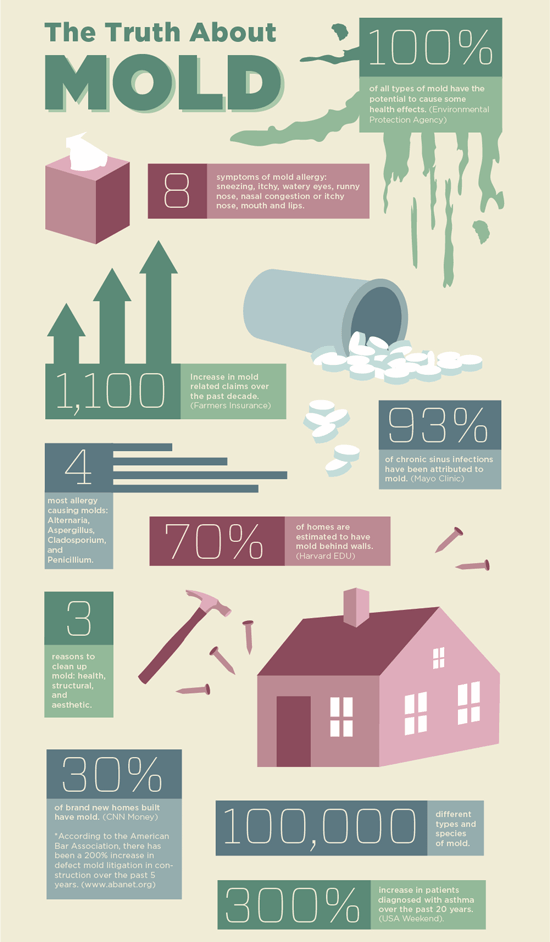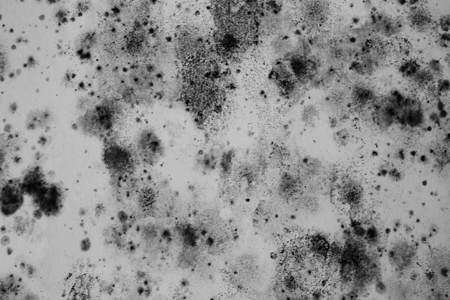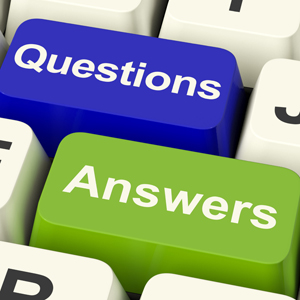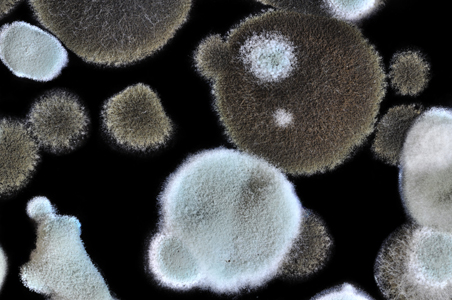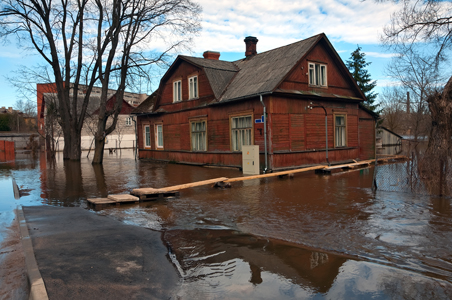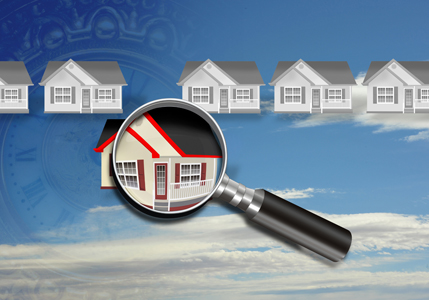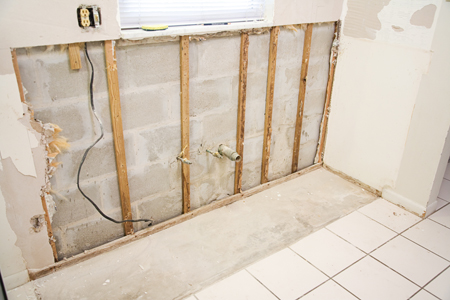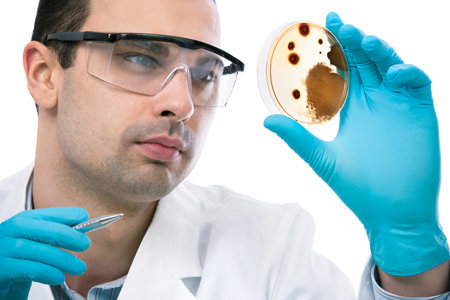
by Eric Brown | Jun 8, 2016 | Air Conditioning, Attic Mold, Basement Mold, Can Black Mold Poison You?, Can Mold Kill?, Chronic Inflammatory Response Syndrome (CIRS), Crawlspace Mold, Dead Mold Spores, Health, How Toxic Is Mold?, Indoor Air Quality, Mold and Asthma, Mold and Depression, Mold and Infants, Mold and Multiple Sclerosis, Mold and Parkinson's Disease, Mold and Pregnant Women, Mold and Sids, Mold and Sinusitis, Mold Facts, Mold In Apartment, Mold Information, Mold Inspection, Mold Remediation, Mold Removal, Questions and Answers, Toxic Mold
Atlanta Indoor Air Quality Testing Experts!

Atlanta Indoor Air Quality Testing Experts!
Indoor air quality testing is an important part of determining how healthy your surroundings are.
Since we spend over 90% of our life indoors, the health and quality of the air we breathe is of utmost importance.
The majority of indoor pollutants are invisible to the naked eye and do not necessarily produce a noticeable odour.
Good indoor air quality should also not be confused with cleanliness or hygiene.
A visibly clean home or office can have a number of air quality issues that are difficult to rectify if they are not identified properly.
Bad Air Can Impact Your Health!
Do you have any of the following health symptoms?
- Recurring headaches;
- Breathing difficulties, asthma, or respiratory infections;
- Excessive coughing or the feeling of not getting enough air;
- Repeated congestion or sinus infections;
- Dizziness, confusion or malaise;
- Skin irritation or rash;
- Ear and eye infections
These symptoms could be caused by the air you are breathing.
Our Indoor Air Quality Testing
We use OSHA, NIOSHA, and EPA testing procedures to investigate indoor air quality complaints or give you a profile of your air.
Hundreds of compounds can be tested for including gases, chemicals, dust, and biological samples.
We take special care in instruments calibration and sample handling to produce accurate and reliable results.
Our results are compared with controlled samples to ensure accurate data.
We offer services for both residential and business customers.
Mold Testing
Mold testing is done by taking air samples and comparing inside and outside spore numbers and can determine if a building has a high amount of mold present.
Mold and moisture testing will help assess problems by determining if high mold levels exist and if remediation work is necessary.
For more general info on mold you can also visit the EPA’s mold home page, the CDC’s homepage, and the website set up by Wonder Makers Environmental, www.moldsensitized.com.
Mold Inspections
Mold inspections look for any areas affected by mold and moisture.
During our inspections, we take moisture reading of interior walls in the sample area to see if there is a suitable environment for mold to grow.
Our experts are trained scientists and have a background in the building construction industry.
We can relate mold data to a building and provide you with practical solutions if a problem is found.
We can identify and asses any mold problem you may have.
Environmental Consulting
Consulting services meet your special and specific environmental needs.
Risk management services are offered to help asses environmental conditions present and to help determine if action should be taken to minimize risks and exposure.
Got Indoor Air Quality Questions?
Call, (470) 545-4467, or send us an e-mail. We look forward to serving you! 🙂
Indoor Air Quality and Your Health (Infographic)

by Eric Brown | May 19, 2016 | Can Mold Kill?, Crawlspace Mold, Dead Mold Spores, Health, How Toxic Is Mold?, Indoor Air Quality, Killing Mold, Mold and Asthma, Mold Facts, Mold Information, Mold Inspection, Mold Remediation, Mold Removal, Questions and Answers, Stachybotrys Black Mold, Toxic Mold
Atlanta Crawlspace Mold Removal, Mold Prevention, and Encapsulation Experts!

Atlanta Crawlspace Mold Removal, Mold Prevention, and Encapsulation Experts!
Top 3 Questions About Crawl Space Humidity
What’s the threshold humidity level for mold growth?
When the relative humidity of your crawl space is 70% or higher, mold can thrive.
“Relative” humidity is the humidity level expressed in a percentage of the amount of moisture in the air needed for “saturation” (i.e. the highest level of humidity – 100%).
The amount of water the air can hold (humidity level) is dependent upon the temperature of the air itself.
When the humidity level begins to creep up past 70% relative humidity, this provides the perfect environment for mold growth!
I’m seeing condensation. What does that mean?
Condensation is an indication that the air within your crawl space has reached 100%.
The air can no longer hold the moisture and it’s condensing onto the surfaces, causing the organic materials that make up your crawl space to become damp, which will result in mold growth.
How do I know when the humidity in my crawl space is at a dangerous level?
A hygrometer is a device used to measure the humidity of indoor air.
Using this tool to measure the humidity of your crawl space is a great way to monitor the amount of moisture present.
A thermo-hygrometer measures both temperature and humidity level.
These devices are even more ideal for crawl space atmosphere monitoring because the relative humidity level is contingent upon the moisture in the air in relation to the air’s temperature.
Being able to track the changes in both of these conditions in your crawl space will allow you to see trends and anticipate necessary changes.
For instance, if the weather is hot during the day but the temperature plummets at night, this can cause problems for your crawl space’s humidity levels.
The daytime temperature is higher, which allows the air to hold more moisture.
As night approaches and the air cools, the amount of moisture the air can hold also decreases – causing the relative humidity level to rise.
A crawl space that was at a permissible humidity level during the day can run into problems when night falls.
Being able to see these changes on your thermo-hygrometer can help you identify these types of trends so that you can respond appropriately.
Keep in mind that properly insulating your crawl space and installing vapor barriers will help regulate the temperature and keep moisture levels down, resulting in less fluctuations in the air’s relative humidity.
Humidity Levels In Your Crawlspace Affect The Rest Of Your Home
Having unconditioned air below your living spaces makes the whole house harder to heat and cool as well as provide the perfect damp setting for mold spores to breed.
In the past, we were told that crawlspaces needed to be ventilated. Now, however, we are learning that crawlspaces need to be treated almost as if they were living spaces. In other words, areas that are in contact with your living space affect your living space. So if you have a crawlspace, what solution is available?
Mold-B-Gone Remediation, LLC can help you dry out the dampest crawlspaces and turn them into drier, healthier foundations for your home that aren’t breeding grounds for mold spores.
Crawlspace Solutions
Turning crawlspaces into dry spaces!
Our Dry-space technique combines the following:
- A thorough cleaning of the space, including mold remediation.
- Installation of a wall-to-wall guide, durable, 14 mil vapor barrier.
- Attachment of the vapor barrier over ground and up sidewalls to 6 inches below floor joists.
Crawlspace Encapsulation (Before and After Photos)
[huge_it_gallery id=”3″]
The result is an energy efficient, healthy home. Mold-B-Gone Remediation, LLC’s dry space methods described above not only helps mold-proof your home, but the combination of these methods will make it more energy efficient and comfortable. For more information on our crawlspace solutions, contact us today.

by Eric Brown | May 6, 2016 | Air Conditioning, Attic Mold, Basement Mold, Beware Of Mold When Buying A Home, Bleach and Mold, Can Black Mold Poison You?, Can Mold Kill?, Chronic Inflammatory Response Syndrome (CIRS), Crawlspace Mold, Dead Mold Spores, Flood Clean Up, Health, How Toxic Is Mold?, Indoor Air Quality, Killing Mold, Mold Facts, Mold Information, Mold Inspection, Mold Remediation, Mold Removal, Questions and Answers
Atlanta Mold Testing, Mold Remediation and Mold Recovery Experts!

Atlanta Mold Testing, Mold Remediation and Mold Recovery Experts!
Got a mold concern, call 678-697-6267.
Water is a vital necessity for life, but when it becomes uncontrolled, it can cause devastation. Whether your property has been damaged by a torrential downpour, a triggered sprinkler system or busted pipes, Mold B Gone can help.
Water can cause much more serious damage than just getting things a little soggy. In many cases the damage to the structure is not confined to just the water line. The drywall, wood, and even concrete used in many structures can act as a sponge which will then cause the water damage to extend much higher and deeper into the structure. Also mold growth can happen after a period of time and often will appear long after the water damage.
Mold comes from excessive moisture or water accumulation indoors. While it is impossible to eliminate all molds and mold spores, controlling moisture can control indoor mold growth.
All molds share the characteristic of being able to grow without sunlight. Mold only needs a viable seed (spore), a nutrient source, moisture, and the right temperature to proliferate. This explains why mold infestation is often found in damp, dark, hidden spaces. If left unchecked, molds gradually damage building materials and furnishings. Eventually mold can cause structural damage to a wood framed building, weakening floors and walls as it feeds on moist wooden structural members. This is a particular concern if you have mold growing in your crawl space.
The purpose of mold remediation is to correct the moisture problem and to remove moldy and contaminated materials to prevent human exposure that can impact health and further damage to building materials and furnishings.

Atlanta Mold Testing, Mold Remediation and Mold Recovery Professionals!
Mold Recovery: Four Steps
If you think you have mold, you should take these important steps now to prevent more damage to your home or business and more importantly, avoid health problems.
- Call us to discuss your mold issue. At that time we can perform a mold inspection and if required, test the indoor air quality to determine the spore count and mold species.
- If swab, tape, or indoor air quality tests are done, these will be sent to an accredited third party lab for the results. This report is used to scope the job for cleaning and repairs. Our Mitigation Project Manager will then discuss the cleaning process with you.
- Once the area is has been mitigated, a Third Party air quality consultant will do a second air test to be sure that the air in your home or business will not promote further mold growth. Please note, some customers prefer the Third Party air quality consultant to do both the pre and post testing which we can arrange for you.
- If your home was damaged by an insurable water emergency, like a flood or sewer backup, and your property needs reconstruction, our Project Manager will refer you to a reconstruction contractor we work with to survey the damage and discuss in detail your options and steps for rebuilding. If the mold is found in your basement, we offer a basement build out service as well. If your home experienced a sewer backup, we also can sanitize your home for you as well. Once you select us to perform the reconstruction work, we will require your authorization to work with your insurance company. We will then submit the estimate to your insurance company and work with them to reach an agreement on the cost to complete the repairs. We work for you and our goal is to get your home or business back to its pre-loss condition as quickly as possible. When the work is completed you will be asked to sign a Certificate of Satisfaction stating that you are satisfied with the restoration. This will be submitted to the insurance carrier for release of the final payment.
Got Mold Concerns?
Call Mold B Gone, 678-697-6267 or send us an e-mail. We are Atlanta’s leading certified experts for mold testing and mold remediation. With over two decades of experience and thousands of successful homes, you can trust us to take care of any mold remediation problem that you may have with the utmost care for you and your home.
Mold Summary Infographic

Atlanta, Georgia Mold Summary Infographic!

by Eric Brown | Apr 15, 2016 | Air Conditioning, Attic Mold, Basement Mold, Beware Of Mold When Buying A Home, Bleach and Mold, Can Black Mold Poison You?, Can Mold Kill?, Christmas Tree Mold, Chronic Inflammatory Response Syndrome (CIRS), Crawlspace Mold, Dead Mold Spores, Flood Clean Up, Health, How Toxic Is Mold?, Indoor Air Quality, Killing Mold, Mold and Asthma, Mold and Depression, Mold and Infants, Mold and Multiple Sclerosis, Mold and Parkinson's Disease, Mold and Pregnant Women, Mold and Sids, Mold and Sinusitis, Mold Facts, Mold In Apartment, Mold In The Bible, Mold Information, Mold Inspection, Mold Remediation, Mold Removal, Mold Removal Cost, Mold Risk During Renovation, Mold Sensitized Success Story, Questions and Answers, Sewer Backup, Sippy Cup Mold, Stachybotrys Black Mold, Top 15 Mold Prevention Tips, Toxic Mold, Water Damage Restoration
The Ultimate Mold Education Resource

The Ultimate Mold Education Resource
The goal of Mold B Gone is to educate our customers about mold. We strongly believe that an educated and informed consumer can make better decisions when they have concerns about mold.
Included in this article are 36 links to articles that will help you learn about mold.
Please bookmark this page because we will update it with new articles as they are researched and published.
If you have questions about mold removal, crawl space mold removal and encapsulation, other services we offer, and/or our 1 year up to 25 year guarantee, call us, 678-697-6267, or send us an e-mail. We look forward to serving you. 🙂
Mold Facts and Information (7 Articles)

Mold Facts and Information (7 Articles)
Priests were the equivalent of today’s mold inspectors. This article lists the three passages cited in Leviticus. Learn more!
Mold Fact 1: The Key Ingredient Mold Needs To Thrive Is Moisture. There are 9 more mold facts explained in this article. What do you think they are?
Top 4 Reasons Mold Grows In Your Attic! The purpose of this article is to explain why mold grows in your attic and prevention tips.
Top 3 Reasons Your Crawlspace Has High Humidity. This article explains why your crawlspace is humid, why this leads to mold and how you can fix the problem!
Steps Residents Can Take If They Have Mold In Their Apartment! This article explains what you can do if you find mold in your apartment. Learn more!
Top 10 Reasons Mold Is Scary!
Here are the top 10 reasons we believe that mold is scary. Enjoy!
This article provides you with information to help you determine if you have a mold problem and explains what you should and should not do if you do find mold.
Black Mold (2 Articles)

Black Mold (2 Articles)
Recently a news article featured a woman who believes that she was poisoned by toxic black stachybotrys mold. This article explores this topic further!
Stachybotrys is considered the king of molds because exposure to this toxic black mold causes 15 serious health conditions. Learn more!
Mold and Health (13 Articles)

Mold and Health (13 Articles)
Wondering if you are sensitive to mold? This article explains how to determine if you are mold sensitized, seeking treatment, and the next two steps to health!
This article explains why mold can be toxic, listing 10 specific health conditions. Learn more!
Potential Health Complications Mold Exposure Has On Pregnant Women and Infants! Questions answered about SIDS, asthma, miscarriage, and pulmonary hemorrhage.
This article article explains why mold grows on sippy cups, why it could make your child sick, and how you should properly clean the sippy cup!
Mold Remediation Improves Health! This article explains why, citing an interview with Jack and Helen Graham, a Mold Sensitized Success Story!
Could Some People Diagnosed With Multiple Sclerosis Actually Be Suffering From Mold Sickness? This article explains how and why. Learn more!
One in Three people get sick from their Christmas tree. This article explains why and what you can do to feel better. Learn more.
Why Do Some People Get Sick From Mold And Others Do Not? This article explains why 1 in 4 people have a genetic predisposition to mold illness.
This article explains why many suffering from CIRS are diagnosed with depression caused by mold. Both scientific and anectodal data are cited. Learn more!
Does Mold Cause Parkinson’s Disease? The purpose of this article is to explain why and how mold could be a possible cause of Parkinson’s Disease.
Top 3 Reasons Mold Sickness Is A Hidden Epidemic! You could be sick from mold and not even know it. This article explains why mold is a hidden epidemic!
37 million Americans suffer from sinusitis. Cause? This article lists the top 10 stats and facts citing MAYO clinic research that believes mold is the cause!
According to the CDC, rates of asthma among children in Georgia is 3% above the national average. Is mold a factor? This article cites stats and research!
Water Damage and Mold (4 Articles)

Water Damage and Mold (4 Articles)
Concerned about sewer backups? This article explains what causes sewers to backup and how you can prevent this from happening. Learn more!
Flood and water damage not only disrupts your life but can also be hazardous to your health! This article explains the top 3 hazards and prevention measures!
A flooded home or business is always a stressful situation. This blog provides you with the 3 steps required to reduce flood damage and most importantly, mold!
Water damage restoration restores a property to pre-loss condition after a flood. Check out the top 3 facts. Hint: Mold is not the only concern.
Mold Inspection and Prevention (7 Articles)

Mold Inspection and Prevention (7 Articles)
Mold growth can be prevented. This article list the top 15 mold prevention tips, to help you live in a mold free home.
Top 3 Reasons A Mold Inspection Is Essential! This article explains why you should submit an offer to purchase, subject to a home AND mold inspection!
Home improvement is an American tradition. But, did you know that 6 out of 10 homes could have mold? Renovating can cause serious problems. Learn more!
If you are concerned about mold in your basement or your basement was recently flooded, implement these 10 tips to prevent mold growth. Learn more!
If you or someone in your family suffers more frequently from colds or flus and you are not sure why, the cause could be poor indoor air quality. Learn more!
The purpose of this article is to explain how you air conditioner could be a source of mold contamination making you sick and what you can do to fix it.
Wonder what happens during a mold inspection? This article answers all your questions, listing the top 4 actions taken by reputable inspectors.
Mold Removal (3 Articles)

Mold Removal (3 Articles)
Have a mold concern, wondering what it will cost to remove? This article provides you with a detailed explanation of how mold removal cost is determined!
Mold sprays, bleach, biocides, and fungicides are an ineffective “short cut” to mold removal. Killing mold is not the answer! This article explains why.
Mold Removal Is Referred To As Mold Remediation Because Professionals Follow These 8 Steps. This article explains the steps and why you need to hire a pro!

by Eric Brown | Apr 1, 2016 | Can Black Mold Poison You?, Health, How Toxic Is Mold?, Indoor Air Quality, Mold Facts, Mold Information, Mold Remediation, Mold Removal, Questions and Answers, Toxic Mold
Why Is Mold A Concern?

Why Is Mold A Concern?
“Mold can also be completely harmless, but in some situations, it can be truly deadly.” (Dr. Travis Stork, E.R. Physician)
“One study found a child’s risk of asthma can double from simply smelling mold.” (Dr. Jim Sears, Pediatrician)
Most homes and buildings have mold because they offer the three ingredients mold needs to grow:
- Food, which includes materials high in cellulose content such as paper and wood. Drywall, wallpaper, carpet, ceiling tiles, dust, and dirt, are also food sources for mold.
- Temperatures of 41 degrees to 100.4 degrees Fahrenheit present the perfect environment for mold.
- Finally, water is the key ingredient. Mold can not grow without moisture. Where there is moisture, you will find mold. This is one of the reasons that leaking pipes, roofs and ceiling, sewer backups, floods, and condensation end up causing mold issues.
Mold is a concern because we spend up to 90 percent of our time indoors, creating a situation ripe for health issues.
Ten Health Conditions Caused By Mold
Mycotoxins are naturally occurring substances produced by mold and are pathogenic to animals and humans.
In fact, the T-2 mycotoxin, is so toxic that it has been used in war time situations as a biological war agent. In aerosol form it is referred to as “yellow rain” and was used in Vietnam, Laos, and several other wars.
Some molds, particularly stachybotrys (black mold) and aspergillus are very toxic and constant exposure can lead to serious health issues.
Health risks from mold increase in areas where the relative humidity is above 55%, primarily because higher humidity means higher moisture and mold thrives in this climate.
Mold is toxic and can cause the following ten health conditions:
- Pulmonary hemorrhage or pulmonary hemosiderosis (primarily in infants)
- Nose bleeds
- Immune system suppression (resulting in increasing numbers of infections)
- Hair loss
- Dermatitis
- Chronic fatigue
- Psychological depression
- Diarrhea
- Sore throats
- Headaches and other flu-like symptoms
Top Ten Mold Prevention Tips Prescribed By The Doctors TV Show
- Potential health effects and symptoms associated with mold exposures include allergic reactions, asthma, and other respiratory complaints.
- There is no practical way to eliminate all mold and mold spores in the indoor environment; the way to control indoor mold growth is to control moisture.
- If mold is a problem in your home or school, you must clean up the mold and eliminate sources of moisture.
- Fix the source of the water problem or leak to prevent mold growth.
- Reduce indoor humidity (30 to 60 percent is recommended) to decrease mold growth by: venting bathrooms, dryers, and other moisture-generating sources to the outside; using air conditioners and de-humidifiers; increasing ventilation; and using exhaust fans whenever cooking, dishwashing, and cleaning.
- Clean and dry any damp or wet building materials and furnishings within 24 to 48 hours to prevent mold growth.
- Clean mold off hard surfaces with water and detergent, and dry completely. Absorbent materials such as ceiling tiles, that are moldy, need to be replaced.
- Prevent condensation: Reduce the potential for condensation on cold surfaces (e.g., windows, piping, exterior walls, roof or floors) by adding insulation.
- In areas where there is a perpetual moisture problem, do not install carpeting (e.g., by drinking fountains, by classroom sinks, or on concrete floors with leaks or frequent condensation).
- Molds can be found almost anywhere; they can grow on virtually any substance, provided moisture is present. There are molds that can grow on wood, paper, carpet, and foods.
Questions? Mold B Gone is here to help. We are mold remediation professionals and back our work with a written guarantee. Call 678-697-6267 or send us an e-mail. We look forward to serving you. 🙂
